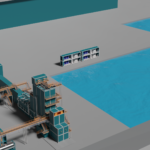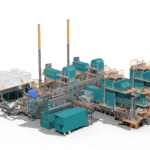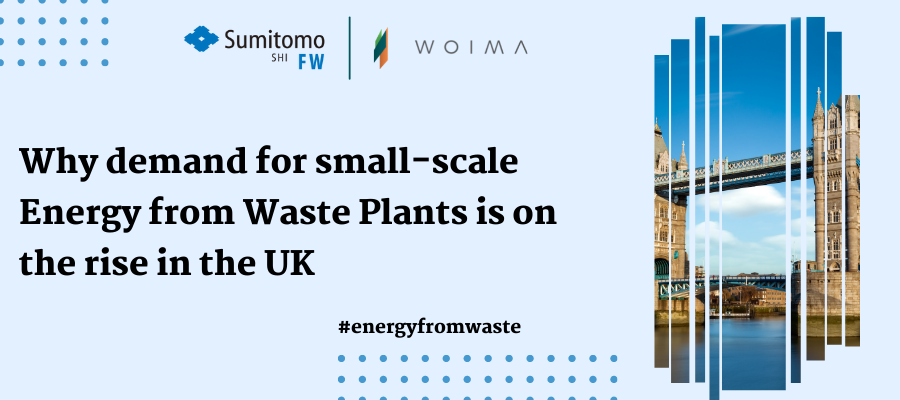According to official statistics, the amount of solid household, commercial and industrial waste after recycling arising in the UK every year is about 26 million tonnes. About 40% of that residual waste is being landfilled and about 10% is exported to countries like Sweden and the Netherlands. This means that about 11 million tonnes, equivalent to 1.5 million African elephants, of non-recyclable waste still ends up in landfills every year. This is not a sustainable way forward for the UK.
Landfilling of waste is an important contributor to climate change. Decomposing of biodegradable waste in landfills emits methane, which has a global-warming potential 25 times higher than CO2. Every year landfills in the UK release over 14 million metric tonnes of carbon dioxide into the atmosphere. At the current landfilling rate, the UK will also simply run out of landfilling space by 2035.
Operators of recycling facilities are also faced with ever increasing cost to dispose their residual waste. With a landfill tax of £98.60/tonne, the landfilling costs in the UK can reach as high as £135/tonne when accounting for the transport cost and tipping fee. With the tax increasing every year these costs will only continue to rise. Large incinerator plants charge, on average, about £80/tonne, or even higher if they have no spare capacity. Due to incineration taxes in Sweden and the Netherlands, also exporting costs are increasing.
Landfilling is for a reason at the bottom of the waste hierarchy and the UK has committed to reduce landfilling to maximum 10% of its municipal waste by 2035.
Energy from Waste as a more sustainable alternative
Landfilling is not only wasteful land use, expensive and environmentally unsound, but also a waste of a low-carbon energy source. About 50% of non-recyclable waste is biogenic and the energy recovered from waste is therefore a low-carbon substitute for fossil fuels. When considering the avoidance of landfill methane, Energy from Waste (EfW) has a net negative CO2 impact. Energy from Waste also complies with very stringent environmental regulations and reduces the waste volume with about 80 to 90%. The remaining ash can be used as a construction material, after it has been treated and valuable metals have been extracted.
It is clear that Energy from Waste is more sustainable than landfilling and is becoming an important low-carbon power generation sector in the UK. In 2020, the total power exported by EfW plants was 7,762GWh – just over 2.5% of the total net UK generation of 307,556 GWh. With the new facilities under construction, approved and in planning, the EfW share in power generation is likely to reach seven to eight percent by 2030.
Benefits of decentralizing waste treatment infrastructure
Treating non-recyclable waste locally where it is generated, provides not only low-carbon energy for the local community, but also creates local jobs and reduces the traffic, costs and emissions from transporting the waste to a central landfill or incinerator over often long distances. A more distributed waste treatment infrastructure with smaller plants also gives more flexibility and can avoid locking in large waste amounts to feed centralized incinerators, which could hamper prevention and recycling.
A smaller plant is easier to integrate into existing industrial sites because of its reduced footprint and minimal visual impact. Because of its closer proximity to residential areas, a local plant also allows for easier connection to existing or future district heating networks, increasing the overall efficiency of energy recovery.
All these factors serve to increase public acceptance. Some local authorities therefore only grant planning permissions for Energy from Waste facilities that treat below 100,000 tonnes per year. In addition to a smoother permitting process, small-scale Energy from Waste also provides project developers the advantages of lower investment and higher certainty of waste supply.
As a result, there is a clear trend towards smaller-scale plants in the UK. With a total thermal treatment capacity of just over 16 million tonnes per year, the average annual waste volume treated by the 54 plants in operation today is about 300,000 tonnes per plant. The average capacity of the plants in development is below 220,000 tonnes of waste per year, with many plants below 100,000 tonnes.
wasteWOIMA® is the answer to de-risking your project development
Response to this market demand is the modular small-scale wasteWOIMA® EfW power plant, a pre-engineered and prefabricated solution for waste quantities of 50,000 to 100,000 tonnes per year. Its modular structure makes it easy to transport, build and maintain, while its standardized design keeps both CAPEX and OPEX low.
wasteWOIMA® makes decentralized Energy from Waste not only environmentally, but also economically sound, despite its small scale. With a typical gate fee of £80/tonne of waste and an electricity price of £50/MWh, a typical wasteWOIMA® investment has a payback time between five and eight years and an IRR between 15 and 25%.
In a nutshell, Energy from Waste based on a flexible wasteWOIMA® power plant is the best and most economic waste treatment option in the current market for non-recyclable waste. It reduces the environmental impact of waste, creates value and mitigates investment risks.
Meet Us!
Meet WOIMA and our strategic partner @Sumitomo SHI FW at RWM & Letsrecyle Live, Booth R-K250, in Birmingham, England to discuss more about wasteWOIMA20 solution.





